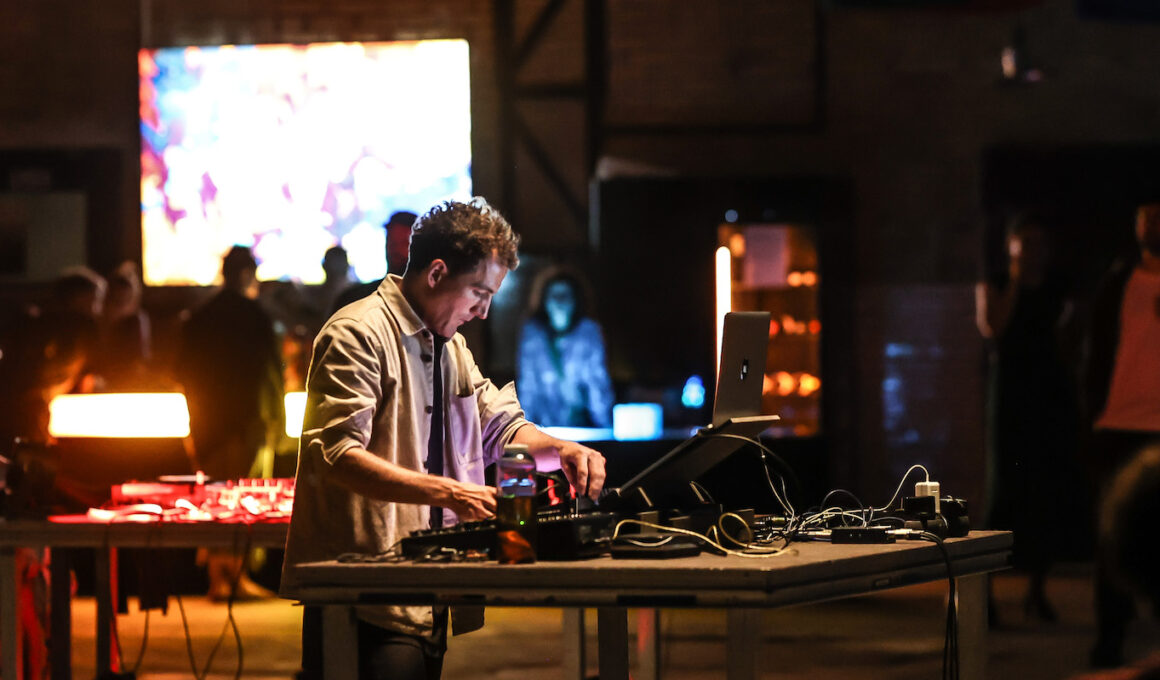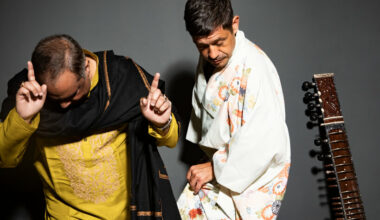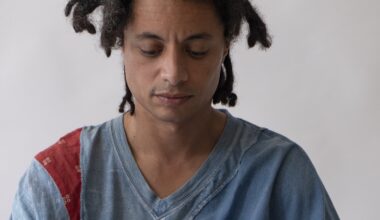Dylan Peirce is a multidisciplinary artist who works in the field of sound, experimental photography, sculpture, video and installation. In 2022, he was releasing his first album Pindrops on the new Berlin-based label D/B. He teaches sound and installation at the UdK Berlin since 2018, and has been one half of the artist duo Astali/Peirce since 2000. His work has been exhibited internationally.
“I have no constraints, only limit is me” is a sound installation by Tolia Astakhishvili and Dylan Peirce. A closed structure made of trapezoidal sheets divides and connects five rooms on the upper floor of Haus am Waldsee. The sound of an enigmatic construction site emanates from its interior: constructed from hundreds of recorded and fabricated sounds and ambiences, an orchestration of machines, tools, and matter unfolds, suggesting a complex relationship to matter and architecture. The exhibition runs from 23.6. to 24.9.2023.
FACTS
1. Noise
2. Sine waves
3. Silence
QUESTIONS
1. What is the biggest inspiration for your music?
Rogue Waves, Heartbeats, Footsteps, Motors, Pressure Points, Steam, Electricity, Depth of Field and Shadows.
2. How and when did you get into making music?
Sculpture helped me get beyond music and closer to sound per say, though of course one cannot and should not strickly seperate the one from the other. My experience working in more genred idioms like hip hop or electronica was certainly of great value production wise, but embrassing a larger sonic scope has come as a great liberation for me.
3. What are 5 of your favourite albums of all time?
To name any would be to leave so many out… Everyone deserves a place.
4. What do you associate with Berlin?
As microcosms, cities engulf you – it’s easy to forget there is a world beyond.
5. What’s your favourite place in your town?
The saddle of a bike and my studio close to Mauerpark.
6. If there was no music in the world, what would you do instead?
I don’t really draw a sharp distinction between the different artistic media – if music was taken away, sure… it would hit hard, and it would provoke a shift, but not a total paradigm twist. The energy has to go somewhere. Plus we have so much to learn about our bodies – cut one sense and another one opens up. The world is polymorphic.
7. What was the last record/music you bought?
Rob Clouth – Zero Point.
8. Who would you most like to collaborate with?
I’d really like to collaborate with foley artists. Bernard Parmegianni was actually a mime artist by training and you can tell by his work that for him, music making was a process of becoming – a deep reckoning with otherness: being water, being elastic, being earth… Foley artists, i believe, have this connection to imitation as transcendance. They release the embedded potential of objects and materials and conjure new realities.
9. What was your best gig (as performer or spectator)?
Jah Shaka in an old gym hall in Newcross, East London in 1997 i think: one lightbulb, one deck, one night, an A3 poster of Hale Selassie, and a tectonic sound system. Unforgetable. I wouldn’t call it a gig really. When i was a teen in the parisian suburbs in the 90s, the underground raves definelty left there mark too (not just on my synapses!)
10. How important is technology to your creative process?
Technology has allowed for the creation of a number of visionary tools that electronic musicians like myself use everyday. Take granular synthesis for example: it was invented by Iannis Xennakis in the 1950 and his vision of the sound mass and of complex swarms of sound grains is embodied therein. Another example is John Chowning’s FM synthesis: it shows us how elementary relations between basic sine waves can produce timbres of tremendous complexity. To work with these tools is to pay honour and to learn from these great artists.
11. Do you have siblings and how do they feel about your career/art?
I have a brother who lives in Senegal. We don’t really talk about this stuff much but that’s ok. The other stuff count too.


